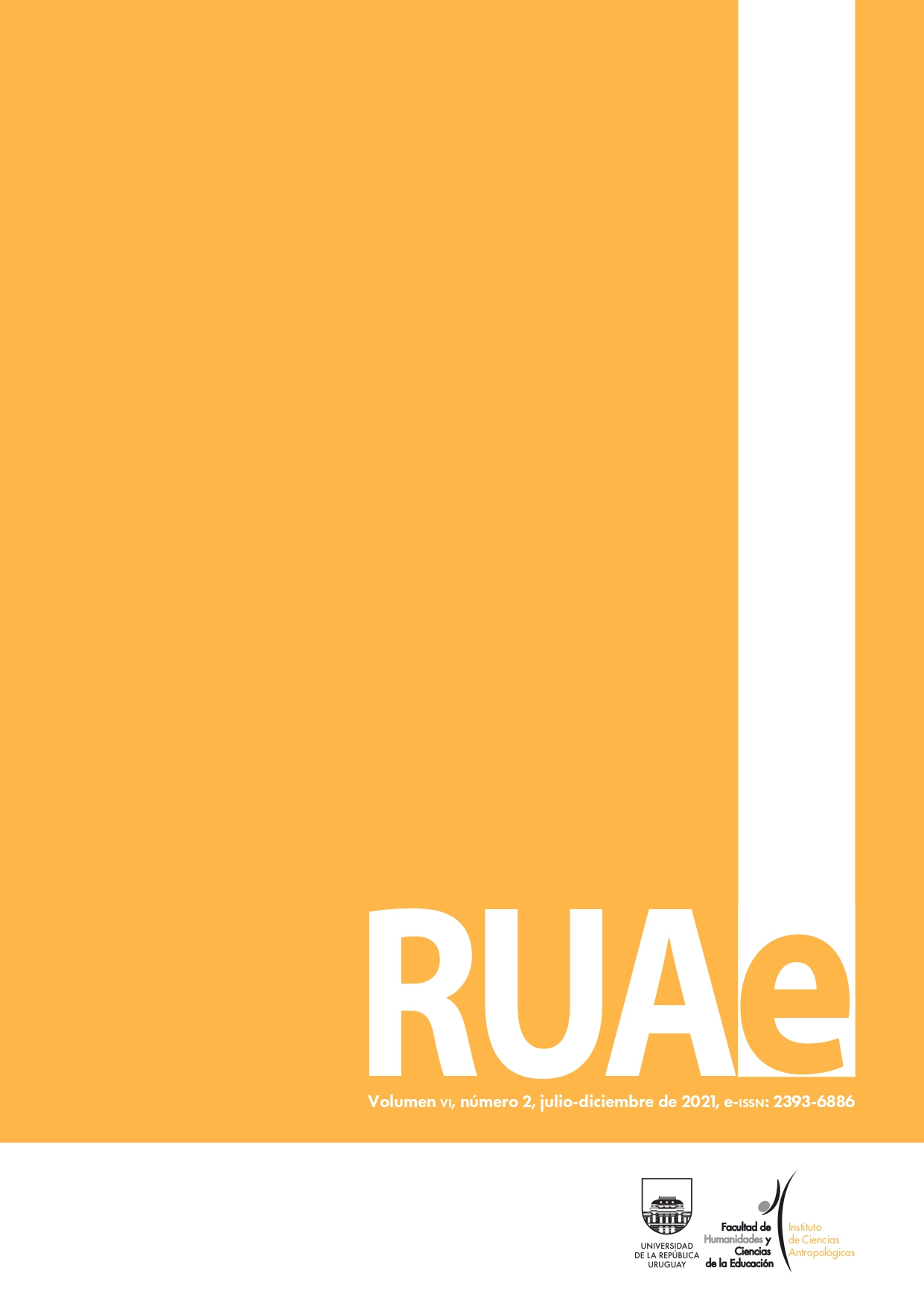Familiar, paisaje, cyborg: imaginarios de vacunos en la prensa gráfica del sector agropecuario argentino (1969-2021)
Published 2021-12-20
Keywords
- vacas,
- ser-hacer,
- imágenes,
- trabajo,
- prensa
- cows,
- beeing-making,
- , images,
- labor,
- press
How to Cite
Copyright (c) 2021 Sofía Ambrogi, Cecilia Argañaraz

This work is licensed under a Creative Commons Attribution-NonCommercial 4.0 International License.
Abstract
This work aims to analyze the cow imaginary in a wide circulation magazine within the Argentine agrotechnical sector during the last fifty years. Considering that visual imaginaries go hand in hand with the production and reproduction of worldviews, and that these enable “correct” and standardized appraisals of “ways of being in the world”, we propose to analyze the prominence of cattle in a magazine of the agrotechnical sector throughout the last decades of the XX until present days.
The chosen period is marked by a process of biotechnological innovation that makes it particularly interesting to ask ourselves what happens to animal bodies, the chains of beings and objects necessary to manufacture raw material and the way in which these transformations find a graphic language of expression that, on occasions, precedes its material concretion.
Through a reticular methodology, we trace how the images of “cows”are increasingly traversed by the green revolution’s local configuration. This work intends to contribute to an understanding of "cows" as multiple beings that participate in various networks of relationships with humans, objects and other non-humans; and exist non-univocally through the superposition of these chains. Beings who labor and are being labored, produce and are being produced. Through this anthropological exploration, we hope to contribute to a multivocal description of cows that inhabit Argentine grasslands throughout the last decades.
Downloads
References
- Azcuy Ameghino, E. (2003). “La fiebre aftosa y la cadena cárnica argentina: una historia de frustraciones”. Historia Regional, (21), 7-22.
- Azcuy Ameghino, E. (2002). La otra historia. Economía, Estado y Sociedad en el Río de
- la Plata colonial. Buenos Aires: Imago Mundi.
- Biangardi, N., y Camarda, M.(2017). “El negocio del cuero en el Río de la Plata a fines del siglo XVIII”. Antíteses, 10(20),943-960. [fecha de Consulta 26 de Marzo de 2021]. ISSN: 1984-3356. Disponible en: https://www.redalyc.org/articulo.oa?id=193354726018
- De la Cadena, M. y Medina, S. (2020) “In Colombia some cows have raza, others also have breed: Maintaining the presence of the translation offers analytical possibilities”. The Sociological Review Monographs. 68(2) 369-384. DOI: 10.1177/0038026120905477
- Evans-Pritchard, E. E. (1940). The Nuer: A description of the modes of livelihood and political institutions of a Nilotic people.Oxford: Claderon Press
- Grasseni, C. (2005) “Designer Cows: The Practice of Cattle Breeding Between Skill and Standardization” Society & animals, 13(1), 33-50.
- Haraway, D. (1984). “A Cyborg Manifesto: Science, Technology, and SocialistFeminism in the Late Twentieth Century”. En Haraway, D. Simians, Cyborgs and Women: The Reinvention of Nature (149-181). New York: Routledge. Disponible en:
- http://blogs.fad.unam.mx/asignatura/adriana_raggi/wp-content/uploads/2013/12/manifiesto-cyborg.pdf
- Harris, M. (1980). Vacas, cerdos, guerras y brujas. Madrid: Alianza Editorial
- Latour, B. (2013) Investigación sobre los modos de existencia. Una antropología de los modernos. Buenos Aires: Paidós.
- ------- (2008) Reensamblar lo social. Una introducción a la Teoría del Actor-Red. Buenos Aires: Manantial.
- ------- (1991) Nous n'avons jamais été modernes. Essai d'anthropologie symétrique. París, La Découverte.
- Law, J. y Mol, A. (2008) “El actor-actuado: La oveja de la Cumbria en 20011”. Política y Sociedad, 45(3): 75-92.





